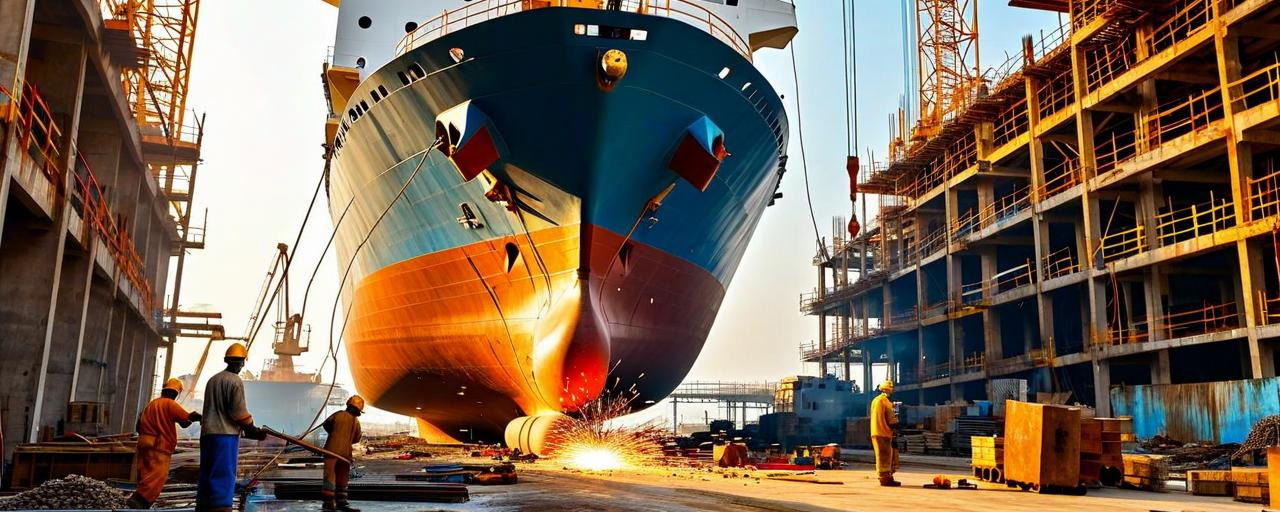India’s Maritime Surge: Navy Drive 2035


India is charting an ambitious course to become a dominant maritime power in the 21st century. The Indian Navy has embarked on its largest-ever s-hipbuilding initiative, a program that not only signals New Delhi’s strategic intent but also underscores its commitment to self-reliance under the government’s ‘Make in India’ vision. With 54 vessels currently under construction across shipyards in Mumbai, Kolkata, Goa, and Visakhapatnam, this expansion is unprecedented in Indian naval history. By 2035, India’s fleet is projected to exceed 200 ships, potentially reaching 230 by 2037, marking one of the most significant naval buildups in the world.
The decision to undertake such a massive shipbuilding drive comes against the backdrop of increasing maritime competition in the Indo-Pacific region, particularly China’s growing blue-water navy. China’s rapid expansion of aircraft carriers, nuclear submarines, and overseas bases has elevated the strategic stakes for India. The Indian Navy’s modernization is thus not merely aspirational; it is essential for safeguarding critical sea lanes, securing the Indian Ocean Region, and projecting power across a rapidly evolving maritime landscape.
Currently, India maintains around 140 warships, including aircraft carriers, destroyers, frigates, corvettes, and submarines. The planned expansion would nearly double this strength over the next decade. Ten of the new vessels are expected to be commissioned by December 2025, with the remainder entering service by 2030. The fleet’s modernization also emphasizes the integration of advanced weaponry, such as the supersonic BrahMos missile system, which equips India’s newly commissioned stealth frigates with cutting-edge offensive and defensive capabilities. The BrahMos, co-developed with Russia, is among the fastest cruise missiles in operation worldwide, capable of striking both sea and land targets with exceptional precision.
At the heart of this initiative is India’s drive for indigenization. Reducing dependence on foreign arms imports and strengthening domestic defense manufacturing are central to the ‘Make in India’ strategy. Shipbuilding has become a flagship sector, creating high-skilled employment opportunities across steel, electronics, propulsion systems, and advanced materials. By 2030, the ongoing projects are expected to generate tens of thousands of jobs, while simultaneously reducing reliance on international suppliers.
International collaboration remains an important component of India’s naval buildup. Russia, a long-standing defense partner, continues to play a vital role in technology transfer and ship production. The delivery of Tamal, the eighth Krivak-class frigate from the Yantar Shipyard in Kaliningrad, marked a significant milestone, incorporating 26 percent Indian components. Similarly, Project 11356 stealth frigates, including INS Tushil, showcase advanced long-range strike capabilities combined with sophisticated stealth technology. These collaborations allow India to absorb advanced expertise while simultaneously fostering domestic production.
The strategic significance of the naval expansion extends beyond defense preparedness. With a fleet surpassing 200 vessels, India will be better positioned to secure vital sea lanes, participate in multinational exercises such as the Quad, and counterbalance regional adversaries. A strong navy enables India to assert influence in areas ranging from East Africa and the Bay of Bengal to the broader Indo-Pacific, ensuring not only national security but also contributing to regional stability.
Challenges, however, remain. Indian shipyards have historically struggled with delays, cost overruns, and bureaucratic hurdles. Coordinating the construction of 54 warships, training personnel, and establishing robust maintenance and logistical frameworks will test the efficiency of India’s defense-industrial complex. Yet, the stakes are high. By combining indigenous production capabilities with selective international partnerships, India is working to ensure timely delivery of advanced vessels while maintaining technological autonomy.
The expansion also reflects a broader strategic vision. India recognizes that maritime dominance in the 21st century requires not just numbers, but capabilities. Submarines, stealth frigates, aircraft carriers, and missile-equipped surface ships collectively form a deterrent against potential adversaries. The combination of quantity and technological sophistication positions India as a credible maritime actor, capable of both defensive operations and power projection.
This initiative also carries economic and industrial benefits. The shipbuilding program stimulates ancillary industries, encourages innovation in defense technologies, and strengthens supply chains. By fostering domestic production of complex naval platforms, India is creating a multiplier effect across sectors, enhancing its overall industrial base while ensuring strategic independence.
India’s naval drive is emblematic of its evolving role on the global stage. As the Indo-Pacific becomes a theater of intense geopolitical competition, India is signaling that it is prepared to safeguard its maritime interests, assert its regional influence, and protect its trade routes. By 2035, a 200-plus ship navy will reflect India’s ambitions to become a decisive force not only in the Indian Ocean but across wider oceans, combining strength, technological edge, and operational readiness.
In conclusion, India’s unprecedented shipbuilding initiative is a turning point in its defense and industrial trajectory. By seamlessly integrating indigenous production, international cooperation, and strategic foresight, India is constructing a navy capable of meeting the demands of modern maritime warfare. While challenges in execution remain, the vision is clear: India is determined to secure its place among the world’s leading naval powers, ensuring both national security and regional stability for decades to come.